A vibrant atmosphere on the streets, quality and affordable restaurants, cool boutiques, culture and a buzzing nightlife. There are many reasons why a neighbourhood becomes a popular place to live. British travel magazine Time Out conducted a poll to find out which are the trendiest neighbourhoods in the world. Find out what they found!
Time Out online magazine asked 20,000 city dwellers to name their favourite neighbourhood in their city. The results were fed in with the opinions of local journalists and editors to produce a list of 51 neighbourhoods ranking the places where it’s simply good to be. But now let’s see EarthisMyHome’s European selection of the 2022 list.
Table of Contents
1. Cours Julien – Marseille, France
Cours Julien is a dynamic neighbourhood in Marseille, France. It’s home to some of the city’s coolest bars and restaurants. With its colourful street art adorning the walls, it’s easy to see why locals flock here for an evening out. The cafés are always full of people enjoying coffee and pastries while soaking up the atmosphere. During summer months, Cours Julien becomes even more lively as visitors come from all over Europe to enjoy its unique culture, music and food.
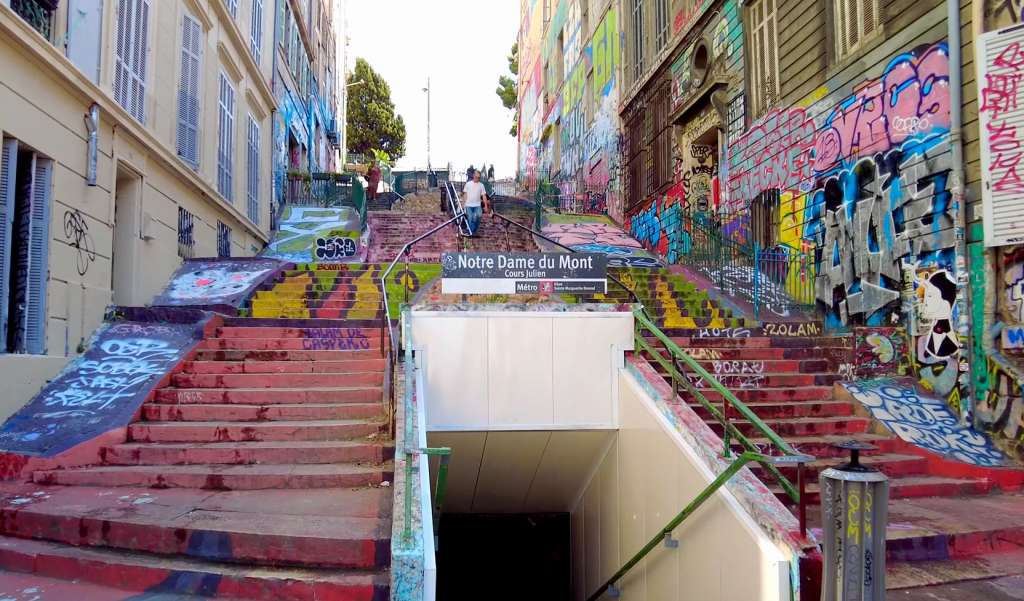
The area also has plenty of shopping opportunities – from vintage stores to designer boutiques, there’s something for everyone. You can find everything from antiques to modern clothing items here. And no matter your budget or style preference, you’re sure to find something that suits you perfectly! Plus, if you’re looking for souvenirs or gifts for friends back home, Cours Julien has got you covered too – with plenty of local specialties on offer such as olive oils and spices.
It’s not just shopping though; Cours Julien is bursting with life day and night. From outdoor festivals to live performances in the streets – this neighbourhood offers something exciting every time you visit! Its welcoming atmosphere makes it one of Europe’s coolest neighbourhoods – definitely worth checking out if you haven’t already been! As the sun sets on another day in Cours Julien, it’s clear why so many have fallen in love with this part of town.
Need-to-know About Cours Julien Neighborhood
- Location: Cours Julien is located in the heart of Marseille, and is easily accessible by public transportation.
- History: The area has a rich history dating back to the 18th century, and has long been a hub of creativity and cultural exchange.
- Culture and Art: Cours Julien is known for its vibrant arts scene, with several galleries and cultural centers to explore. Visit the Friche Belle de Mai to see cutting-edge exhibitions and performances.
- Food and Drink: The neighborhood has a wide range of restaurants and cafes to choose from, with traditional French cuisine and international options on offer. Try the seafood at Chez Étienne or the fusion cuisine at Le Panier à Salade.
- Shopping: Cours Julien is home to several independent shops and boutiques, with a focus on vintage and artisanal products. Check out La Sardine à Paillettes for quirky fashion finds.
- Architecture: The area has several notable examples of 19th-century architecture, including the Palais Longchamp and the Basilique Notre-Dame de la Garde.
- Parks and Green Spaces: Cours Julien has several parks and green spaces, including the Jardin des Vestiges, which features the ruins of a Roman-era harbor.
- Transportation: The neighborhood is well-connected to the rest of Marseille via public transportation, with several metro and bus stations nearby.
- Safety: Cours Julien is generally a safe neighborhood, but it’s always a good idea to be aware of your surroundings and take basic precautions.
- Atmosphere: Cours Julien has a lively and bohemian atmosphere that’s popular with young people and creatives.
Best Places to Visit in Cours Julien, Marseille:
- Street Art: Cours Julien is famous for its vibrant street art scene, with colorful murals and graffiti covering the walls of many buildings.
- Marché de la Plaine: A bustling market selling a variety of fresh produce, clothes, and crafts, with a lively atmosphere and street performers.
- Comptoir du Panthéon: A cozy cafe known for its delicious brunches and homemade pastries.
- Le Cours Julien: The main square of the neighborhood, surrounded by trendy bars, restaurants, and shops.
- Le Jardin Montgrand Restaurant: A small park with beautiful views of the city, perfect for a picnic or a relaxing stroll.
- Marseille History Museum: A fascinating museum showcasing the history of Marseille, with interactive exhibits and artifacts from ancient times to the present day.
- Le Chapiteau: A unique venue for live music and performances, housed in a giant circus tent.
- Les Grandes Tables du Monde: A food court featuring a variety of international cuisines, from Vietnamese pho to Italian pizza.
- L’ Art des Choix Annonay: A charming bookstore selling a variety of books and magazines, with a cozy atmosphere and friendly staff.
- Chapelle Sainte-Catherine: A beautiful Baroque church with stunning architecture and intricate decorations.
2. Neukölln – Berlin, Germany
Neukölln is one of the coolest neighbourhoods in Europe. It’s a place that emphasizes its unique vibe and culture while offering plenty to do for all ages. From hip music venues, galleries, and clubs to parks, gardens, and incredible street art – Neukölln has something for everyone.
The locals are friendly and welcoming; it’s truly a neighbourhood where people embrace each other for who they are regardless of their background or identity. The streets here bustle with activity as people come together to enjoy life in an urban setting. It’s easy to feel inspired by this lively atmosphere that promotes acceptance and creativity.
If you’re looking for an adventure, Neukölln won’t disappoint! There’s always something new to discover—from hidden bars tucked away down alleyways to unexpected flavors from around the world. This part of Berlin makes exploring fun and exciting, giving travelers the freedom to explore without worrying about what anyone else thinks.
Need-to-know About Neukölln Neighborhood
- Location: Neukölln is located in the southeast of Berlin, and is easily accessible by public transportation.
- History: The area has a rich history dating back to the 13th century, and has been home to a diverse mix of communities over the years.
- Culture and Art: Neukölln is known for its vibrant arts scene, with several galleries and cultural centers to explore. Visit the KINDL – Centre for Contemporary Art to see cutting-edge exhibitions.
- Food and Drink: The neighborhood has a wide range of restaurants and cafes to choose from, with traditional German cuisine and international options on offer. Try the artisanal ice cream at Kiez Eis or the hearty vegetarian fare at Café Vux.
- Shopping: Neukölln is home to several independent shops and boutiques, with a focus on sustainable and ethical products. Check out Neukölln Arcaden for more mainstream shopping options.
- Architecture: The area has several notable examples of modernist architecture, including the Hufeisensiedlung housing estate and the Gropiusstadt development.
- Parks and Green Spaces: Neukölln has several parks and green spaces, including the lovely Körnerpark and the Tempelhofer Feld, a former airport turned park.
- Transportation: The neighborhood is well-connected to the rest of Berlin via public transportation, with several U-Bahn and S-Bahn stations nearby.
- Safety: Neukölln has a reputation for being a bit rough around the edges, but it’s generally a safe neighborhood. Just be aware of your surroundings and take basic precautions.
- Atmosphere: Neukölln has a lively and bohemian atmosphere that’s popular with young people and creatives. The dynamic and varied Berlin culture can be experienced there.
Best Places to Visit in Neukölln, Berlin:
- Tempelhofer Feld: A former airport turned public park where locals go to bike, rollerblade, picnic, and fly kites.
- Weserstraße: A lively street lined with hip bars, cafes, vintage shops, and street art.
- Klunkerkranich: A rooftop bar and urban garden located atop a parking garage, offering stunning views of the city skyline.
- Maybachufer: A canal-side promenade with a bustling Turkish market, street performers, and plenty of food vendors selling falafel, kebabs, and more.
- Schillerkiez: A residential area with a bohemian vibe, filled with unique shops, cafes, and bars.
- Richardplatz: A charming square with historic buildings, including the impressive Bethlehemskirche church.
- Böhmisches Dorf: A picturesque area with colorful houses and cobblestone streets, reminiscent of a small village.
- Volkspark Hasenheide: A large park with a beautiful pond, playgrounds, and an open-air theater.
- Parkbühne Wuhlheide: A former brewery turned concert venue, hosting a range of live music performances and cultural events.
- Neukölln Arcaden: A modern shopping mall with a variety of stores, restaurants, and a cinema.
3. Walthamstow – London, UK
Located just east of downtown London, Walthamstow offers a unique mix of historic charm and modern amenities. It’s home to some great markets, pubs, restaurants, and independent shops that are open late into the night. The locals here have an amazing sense of community spirit and there’s always something going on – from lively street parties to art exhibitions. There are also plenty of green spaces for strolling or taking a picnic – including Highams Park Lake which is ideal for kayaking or paddleboarding. Plus, with its easy access to public transport links you can be in central London within minutes!

The vibrancy of this area makes it stand out as one of the most exciting places to live in Europe. Whether you’re looking for entertainment or relaxation, Walthamstow has something for everyone. Enjoy a summer afternoon browsing vintage stores at the Sunday Market, grab a drink and listen to live music at any number of venues, or take part in outdoor activities like scuba diving or rock climbing at local gyms. The possibilities are endless!
Need-to-know About Walthamstow Neighborhood
- Location: Walthamstow is located in the northeast of London, and is easily accessible by public transportation.
- History: The area has a rich history dating back to the 11th century, and is known for its association with the textile industry during the Victorian era.
- Culture and Art: Walthamstow is a hub of creativity and art, with several galleries and cultural centers to explore. Visit the William Morris Gallery to learn more about the life and work of the famous designer.
- Food and Drink: The neighborhood has a wide range of restaurants and cafes to choose from, with traditional British cuisine and international options on offer. Try Eat17 or the Walthamstow Village Farmers’ Market for delicious local produce.
- Shopping: Walthamstow is home to Europe’s longest street market, which has been operating for over 100 years. The neighborhood also has several independent shops and boutiques to explore.
- Architecture: The area has several notable examples of Victorian and Edwardian architecture, including the Walthamstow Town Hall and the Empire Cinemas Walthamstow.
- Parks and Green Spaces: Walthamstow has several parks and green spaces, including the beautiful Lloyd Park and the Walthamstow Marshes Nature Reserve.
- Transportation: The neighborhood is well-connected to the rest of London via public transportation, with several tube and bus stations nearby.
- Safety: Walthamstow is a relatively safe neighborhood, but it’s always a good idea to be aware of your surroundings and keep your valuables close.
- Atmosphere: Walthamstow has a lively and diverse atmosphere that’s popular with locals and visitors alike.
Best Places to Visit in Neukölln, Berlin:
- Walthamstow Market: One of the longest outdoor markets in Europe, offering a wide range of products including food, clothing, and homeware.
- William Morris Gallery: A museum dedicated to the life and work of British textile designer William Morris, showcasing his famous wallpaper designs and other art pieces.
- Lloyd Park: A large park with beautiful gardens, sports facilities, and a popular outdoor events venue.
- God’s Own Junkyard: A neon wonderland featuring an eclectic collection of vintage signs, light installations, and art pieces.
- Walthamstow Wetlands: A nature reserve and bird sanctuary with scenic walking paths and a visitor center.
- Epping Forest: A large forest and nature reserve with ancient woodland, rivers, and open grassland, perfect for hiking and cycling.
- Stoneydown Park: A peaceful park with a children’s playground and outdoor gym equipment.
- Walthamstow Pumphouse Museum: A museum dedicated to the history of the local water supply, with exhibits showcasing historic pumping equipment.
- Empire Cinema: A historic movie theater with a stunning art deco interior and modern amenities.
- Eat17: A trendy restaurant and grocery store featuring locally-sourced ingredients, a rooftop bar, and regular events such as film screenings and live music performances.
4. Sants – Barcelona, Spain
Welcome to Sants – an oasis of tranquility in one of Europe’s most bustling cities. With its tranquil tree-lined streets, bustling markets, and quaint cobbled alleyways, this neighborhood is a haven for those seeking freedom from the hustle and bustle of Barcelona city life.
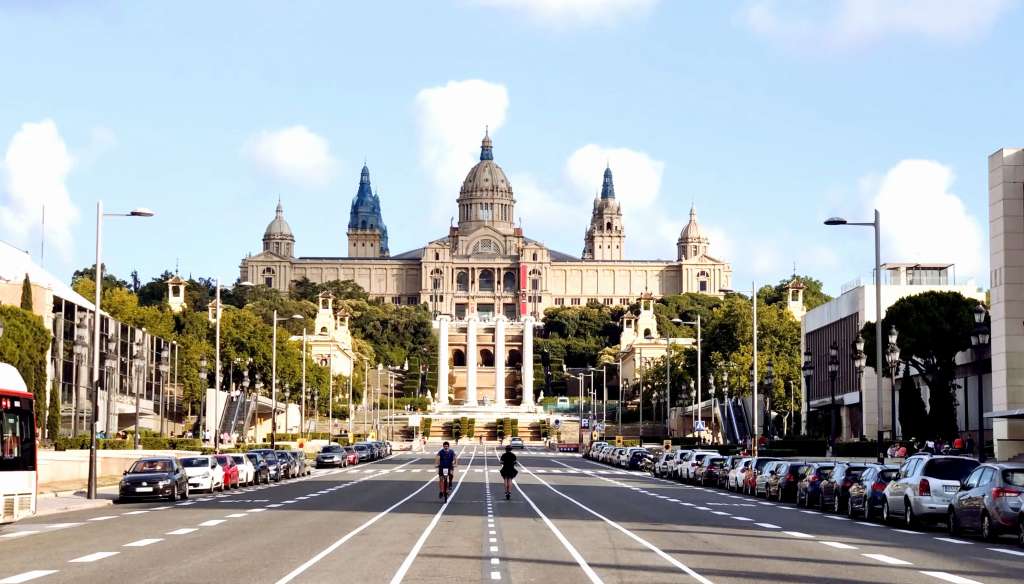
For starters, it’s home to some of Barcelona’s best restaurants, serving up delicious Spanish dishes with a twist. There are plenaty of bars and cafés here too – perfect for relaxing after a day sightseeing or working. And when you’re done eating and drinking your way through the area, why not take advantage of its excellent transportation network? You can easily hop on the metro at Plaça de Sants station or catch one of the many buses that run regularly throughout the city.
The real beauty of Sants lies in its people: locals who have lived here for generations and newcomers alike all come together to create a unique cultural atmosphere full of warmth and friendship. From street festivals to live music events, there’s something special going on almost every night! Take the time to explore this thriving community – you won’t be disappointed!
Need-to-know About Sants Neighborhood
- Location: Sants is located just southwest of the city center and is easily accessible by public transportation.
- History: The neighborhood has a rich history dating back to the Roman times, and it was an independent municipality until it was annexed by Barcelona in the late 19th century.
- Culture and Art: Sants is known for its phenomenal arts scene, with several galleries and cultural centers to explore. The annual Festa Major de Sants is a colorful and lively celebration of Catalan culture.
- Food and Drink: Sants has a wide variety of restaurants and bars to choose from, with traditional Catalan cuisine and international options on offer. Try La Pubilla or La Bodega d’en Rafel for a delicious meal.
- Shopping: Sants has several shopping options, from local markets to big-box stores. Check out the Mercat de Sants for fresh produce and seafood.
- Architecture: The neighborhood has several notable examples of modernist architecture, including the Casas Ramos by Jaume Torres i Grau and the Casa Comalat by Salvador Valeri i Pupurull.
- Parks and Green Spaces: Sants has several parks and green spaces, including the sprawling Parc de l’Espanya Industrial and the charming Parc de la Maternitat.
- Transportation: The neighborhood is well-connected to the rest of Barcelona via public transportation, with several bus and metro stations nearby.
- Safety: Sants is a relatively safe neighborhood, but it’s always a good idea to be aware of your surroundings and keep your valuables close.
- Atmosphere: Sants has a laid-back and welcoming atmosphere that’s popular with locals and visitors alike. It’s the perfect place to experience the energy and diverse culture of Barcelona.
Best Places to Visit in Sants, Barcelona:
- Mercat de Sants: A bustling indoor market with a variety of fresh produce, meat, fish, and other food products.
- Parc de l’Espanya Industrial: A large park with a lake, playgrounds, and picnic areas.
- Montjuïc Castle: A historic fortress on top of Montjuïc hill with panoramic views of the city.
- Camp Nou: The home stadium of FC Barcelona, one of the world’s most famous soccer clubs, offering guided tours and a museum.
- CaixaForum: A cultural center with art exhibitions, concerts, and other events.
- Plaça d’Osca: A lively square with several bars, cafes, and restaurants.
- Sant Jordi Pool: An outdoor pool with a beautiful setting and a great spot to relax in the sun.
- Sants Estació: A historic train station with beautiful architecture and a shopping mall.
- Parc de Joan Miró: A large park with a sculpture garden featuring works by the famous Catalan artist.
- Els Sortidors del Parlament: A cozy bar with a great selection of craft beers and tapas, located in a former dairy.
5. Rione Sanità – Naples, Italy
Rione Sanità is an amazing neighbourhood in Naples, Italy. Its streets are lined with colorful buildings and cobbled alleys that lead to historical piazzas. The area has a long history of artisanship, tradition, and culture – making it one of the coolest neighbourhoods in Europe.
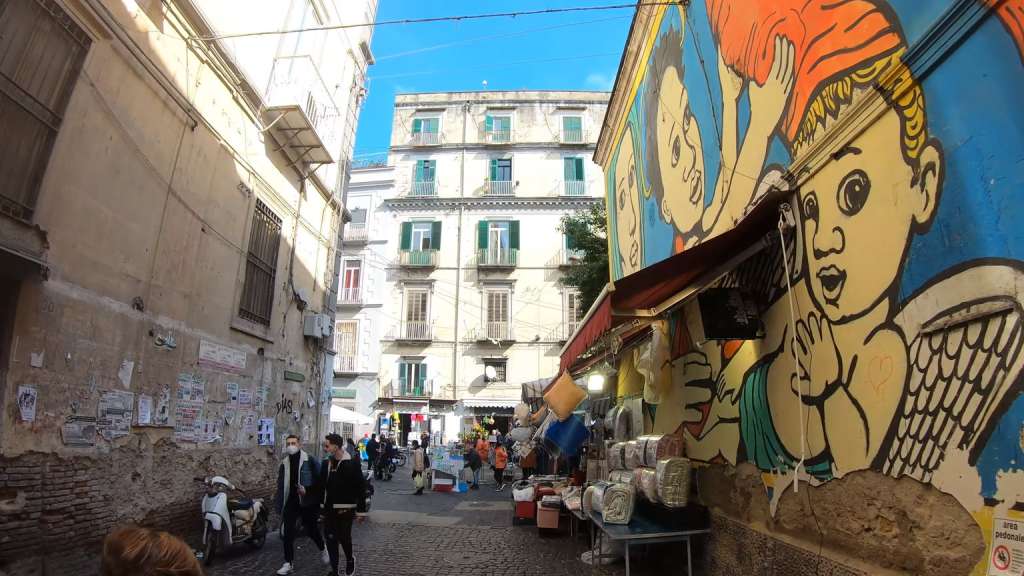
The locals here are known for their friendly attitude and welcoming spirit which makes Rione Sanità truly unique. There’s something special about this place – you can feel its energy as soon as you step into the streets. You will find yourself surrounded by bustling markets full of handmade products, delicious street food, and traditional dishes from the Campania region. It’s a great spot to explore local life and immerse yourself in the culture of Naples.
Rione Sanità is also home to some incredible historical attractions such as Castel dell’Ovo, Santa Chiara Monastery, Chiesa di Santa Maria del Carmine Maggiore, and Fontanelle Cemetery – all worth visiting when exploring this charming neighbourhood. So if you’re looking for a cool destination to experience authentic Italian culture, then look no further than Rione Sanità! With its thriving community atmosphere, rich cultural history, and breathtaking sights – there’s no better place to visit in Europe for a truly unforgettable experience.
Need-to-know About Rione Sanità Neighborhood
- Location: Rione Sanità is located in the heart of Naples, just north of the historic city center.
- History: The neighborhood has a rich history dating back to ancient Roman times, and it’s known for its impressive catacombs and underground tunnels.
- Culture and Art: Rione Sanità is a hub of culture and art, with several museums and galleries to explore. Visit the Sansevero Chapel Museum to see the famous Veiled Christ sculpture.
- Food and Drink: The neighborhood is home to some of Naples’ best restaurants and street food vendors, with traditional dishes like pizza and pasta on offer.
- Shopping: Rione Sanità has several markets and shops to explore, including the bustling Pignasecca Market and the artisan shops on Via dei Tribunali.
- Architecture: The neighborhood is home to several impressive churches and palaces, including the Palazzo dello Spagnolo and the Church of Santa Maria della Sanità.
- Parks and Gardens: Rione Sanità has several parks and gardens to enjoy, including the beautiful Botanical Garden of Naples.
- Transportation: The neighborhood is easily accessible via public transportation, with several bus and metro stations nearby.
- Safety: While Rione Sanità has a reputation as a somewhat rough and gritty neighborhood, it’s generally safe during the day. As with any urban area, it’s always a good idea to be aware of your surroundings.
- Atmosphere: Rione Sanità has a lively and authentic atmosphere that’s perfect for those looking to experience the real Naples. It’s a must-visit for anyone interested in history, art, and culture.
Best Places to Visit in Sants, Barcelona:
- Catacombs of San Gennaro: Ancient underground catacombs with Christian frescoes and tombs.
- Fontanelle cemetery: A unique cemetery in a cave with skulls and bones stacked in niches and crevices.
- Pio Monte della Misericordia: A beautiful Baroque church with an art museum, showcasing works by Caravaggio and other artists.
- Naples Botanical Garden: A lush garden with a variety of plants and trees, including a greenhouse with tropical species.
- Piazza Dante: A large square with a statue of the famous Italian poet Dante Alighieri, surrounded by cafes and shops.
- Napoli Sotterranea: An underground tour of the city’s historic aqueducts, tunnels, and chambers.
- Museo di Capodimonte: A museum showcasing art and artifacts from ancient times to the present day, with beautiful views of the city.
- Spaccanapoli: A narrow street that cuts through the historic center of Naples, lined with shops, restaurants, and churches.
- Castel Sant’Elmo: A historic castle with panoramic views of the city and the Bay of Naples.
- Basilica di Santa Maria della Sanità: A beautiful church with an ornate Baroque facade and stunning interior decorations.
6. Vesterbro – Copenhagen, Denmark
Vesterbro, located in Copenhagen Denmark is a fast-growing cool neighborhood with an estimated population of over 40,000 people. It’s known for being one of the most diverse parts of the city where you can experience everything from bustling bars to peaceful parks. This chic area has been experiencing a massive cultural revival in recent years, making it one of Europe’s hippest places to visit.

Statistics show that Vesterbro accounts for nearly 30 percent of all new restaurants opened in the entire city. The streets are lined with trendy cafes, unique boutiques and funky art galleries, giving visitors plenty to explore during their stay. There’s also a great selection of local markets selling produce as well as traditional Danish street food vendors serving up delicious treats like smørrebrød (open sandwiches) and æbleskiver (a type of pancake).
The picturesque cobbled lanes make this part of town particularly photogenic while its wide range of recreational activities provide something for everyone. Whether it’s sipping on craft beer at Mikkeller & Friends or taking a stroll through nearby Fælledparken, there’s no shortage of fun things to do here. As such, it’s easy to see why more and more locals and tourists alike are flocking to Copenhagen’s coolest neighbourhood: Vesterbro!
Need-to-know About Vesterbro Neighborhood
- Location: Vesterbro is located just west of the city center and is easily accessible by public transportation.
- History: Vesterbro was once a gritty red-light district, but it has undergone a major transformation in recent years and is now one of the city’s trendiest neighborhoods.
- Food and Drink: Vesterbro has a wide variety of restaurants and bars to choose from, with everything from gourmet cuisine to street food. Try WarPigs Brewpub for delicious beer and BBQ.
- Shopping: Vesterbro is home to some great shopping options, from designer boutiques to vintage stores. Check out Søerne’s antique market or the high-end shops on Værnedamsvej.
- Nightlife: Vesterbro is one of the best neighborhoods for nightlife in Copenhagen, with plenty of bars and clubs to choose from. Jolene and Bakken are two popular spots.
- Parks and Green Spaces: The neighborhood has several parks and green spaces, including the popular Søndermarken park and the beautiful Frederiksberg Gardens.
- Culture and Art: Vesterbro is a hub of culture and art, with galleries, museums, and theaters to explore. Visit the iconic Tivoli Gardens amusement park or the Carlsberg Brewery Visitors Center.
- Transportation: The neighborhood is easily accessible via public transportation, with several bus and train stations nearby.
- Safety: Vesterbro is a relatively safe neighborhood, but it’s always a good idea to be aware of your surroundings and keep your valuables close.
- Atmosphere: Vesterbro has a laid-back, bohemian vibe that’s popular with artists, musicians, and creatives.
Best Places to Visit in Vesterbro, Copenhagen
- Meatpacking District: A trendy area filled with bars, restaurants, and clubs, known for its lively nightlife scene.
- Carlsberg Brewery: A historic brewery with guided tours, beer tastings, and a museum showcasing the history of Carlsberg beer.
- Tivoli Gardens: A famous amusement park with thrilling rides, beautiful gardens, and live entertainment.
- Copenhagen Zoo: A large and popular zoo with a wide variety of animals, including elephants, giraffes, and lions.
- Istedgade: A bustling street lined with shops, cafes, and restaurants, known for its multicultural vibe.
- Vega: A music venue hosting concerts and events, featuring both local and international artists.
- Kødbyen: A former meatpacking district now transformed into a cultural hub, with galleries, artist studios, and creative spaces.
- Sønder Boulevard: A popular street with cafes, bars, and shops, perfect for a leisurely stroll.
- Frederiksberg Have: A beautiful park with stunning gardens, a lake, and a palace.
- Huset KBH: A cultural center hosting a variety of events, including concerts, theater performances, and art exhibitions.
7. Cais Do Sodré – Lisbon, Portugal
Cais do Sodré, in Lisbon Portugal, is one of the coolest neighbourhoods in Europe. Located near the Tagus River and a bustling marina, it has something to offer everyone. From its unique street art to its amazing nightlife scene, there’s no end to what you can experience here.
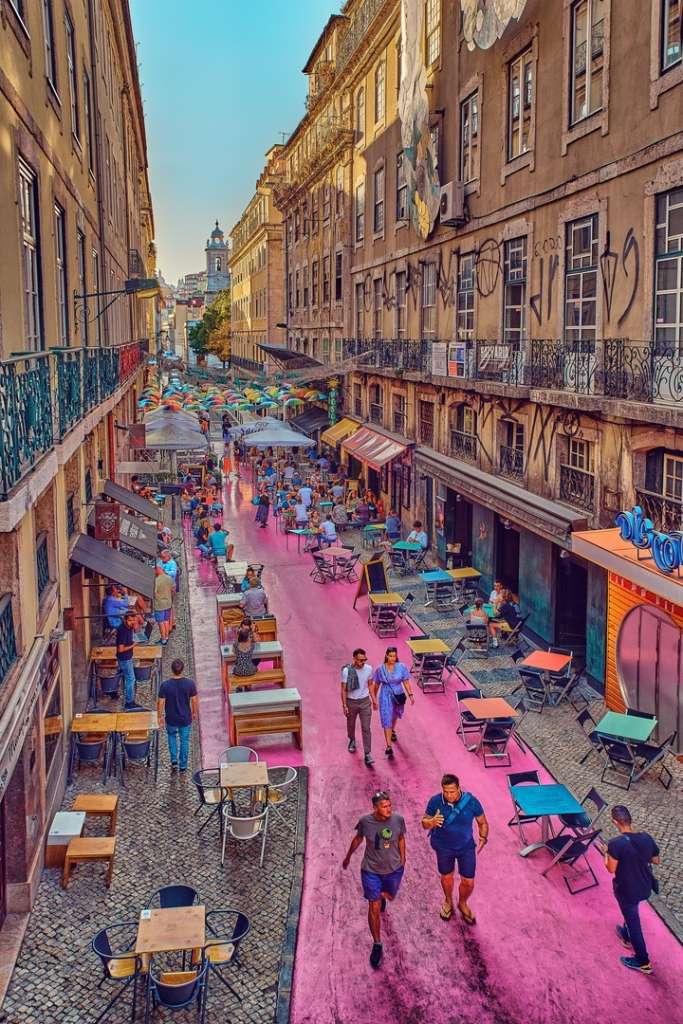
For those looking for culture and history, Cais do Sodré offers an abundance of both. Its cobblestone streets are lined with stunning colonial-style buildings that give off a feeling of old-world charm. During the day visitors can explore ancient churches and palaces while taking in some spectacular views along the way.
At night, this neighbourhood comes alive with energy and excitement. There are plenty of restaurants serving up traditional Portuguese dishes to tantalize your taste buds. As well as bars where you can have drinks or listen to live music until late into the night. With so much going on here, it’s easy to see why people flock from all over the globe to sample life in Cais do Sodré – freedom awaits!
Need-to-know About Cais Do Sodré Neighborhood
- History: Cais do Sodré was once the city’s main port, but it fell into disrepair before undergoing a major revitalization.
- Street Art: The neighborhood is known for its incredible street art, with plenty of murals and pieces to discover.
- Restaurants: Cais do Sodré has some of the best restaurants in Lisbon, with fresh seafood, traditional Portuguese dishes, and international cuisine all on offer. Check out Sea Me for amazing sushi.
- Nightlife: The neighborhood comes alive at night, with plenty of bars and clubs to choose from. Pensão Amor and Musicbox are two of the most popular spots.
- Shopping: Cais do Sodré is home to some seriously unique shops and markets, including the Time Out Market and the Embaixada boutique mall.
- Location: Cais do Sodré is conveniently located near many of Lisbon’s top attractions, including the historic Alfama neighborhood and the stunning Praça do Comércio.
- Transportation: The neighborhood is easily accessible via public transportation, with bus, tram, and train stations all nearby.
- Safety: While Cais do Sodré is a relatively safe neighborhood, it’s always a good idea to be aware of your surroundings and keep your valuables close.
- Outdoor Activities: Take a stroll along the riverfront or rent a bike and explore the neighborhood on two wheels.
- Atmosphere: Cais do Sodré is known for its bohemian, laid-back vibe, making it the perfect spot for a relaxed yet exciting day or night out in Lisbon.
Best Places to Visit in Cais Do Sodré, Lisbon
- Time Out Market: A vibrant food hall with a wide variety of gourmet food stalls, featuring both traditional Portuguese cuisine and international dishes.
- Pink Street: A popular nightlife spot, known for its pink pavement and lively bars and clubs.
- Mercado da Ribeira: A historic market selling fresh produce, seafood, and other local delicacies, with a bustling atmosphere and lively music performances.
- Lisbon Cruise Terminal: A modern and spacious terminal for cruise ships, with stunning views of the Tagus River.
- Museu de Arte, Arquitetura e Tecnologia (MAAT): A contemporary art museum featuring innovative exhibitions, with a stunning modern architecture and waterfront location.
- Ribeira das Naus: A popular riverside promenade with beautiful views of the Tagus River and the city, perfect for a relaxing stroll or a picnic.
- São Paulo Church: A beautiful Baroque church with stunning architecture and intricate decorations.
- Lisbon Under Stars: An immersive experience showcasing the history and culture of Lisbon through light and sound shows, projections, and live performances.
- Praça de Dom Luís I: A lively square with a variety of shops, cafes, and restaurants, perfect for people-watching and soaking up the local atmosphere.
- LxFactory: A trendy creative hub with a variety of shops, galleries, and restaurants, housed in a former industrial complex.
In conclusion, Europe is a continent full of diverse and interesting neighbourhoods. From the vibrant Cours Julien in Marseille to the trendy Neukölln in Berlin, it’s easy to find something that will appeal to any type of traveller. In London, Walthamstow offers an urban escape from the hustle and bustle of city life. For a more chilled-out vibe, head to Sants in Barcelona or Rione Sanità in Naples for some true Italian charm. If you’re looking for something closer to home, Vesterbro in Copenhagen and Cais do Sodré in Lisbon are must-sees!

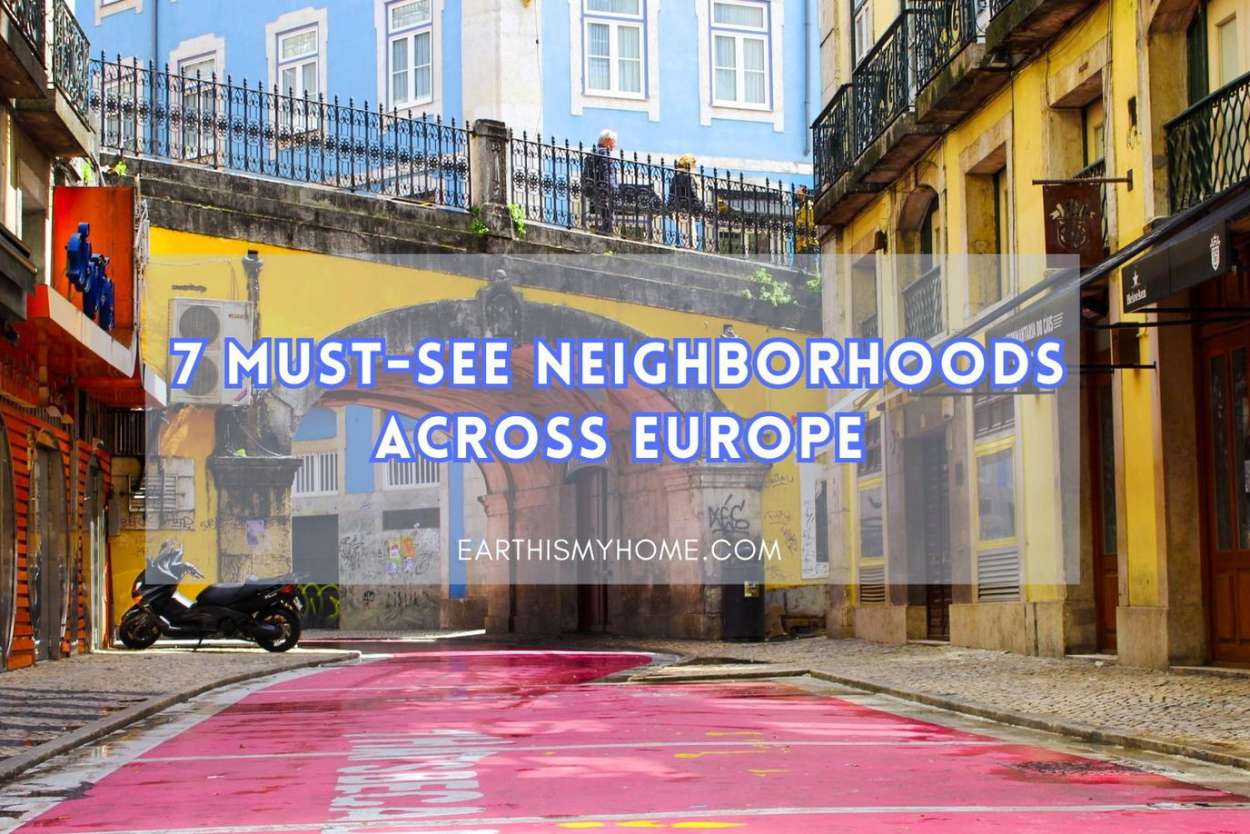



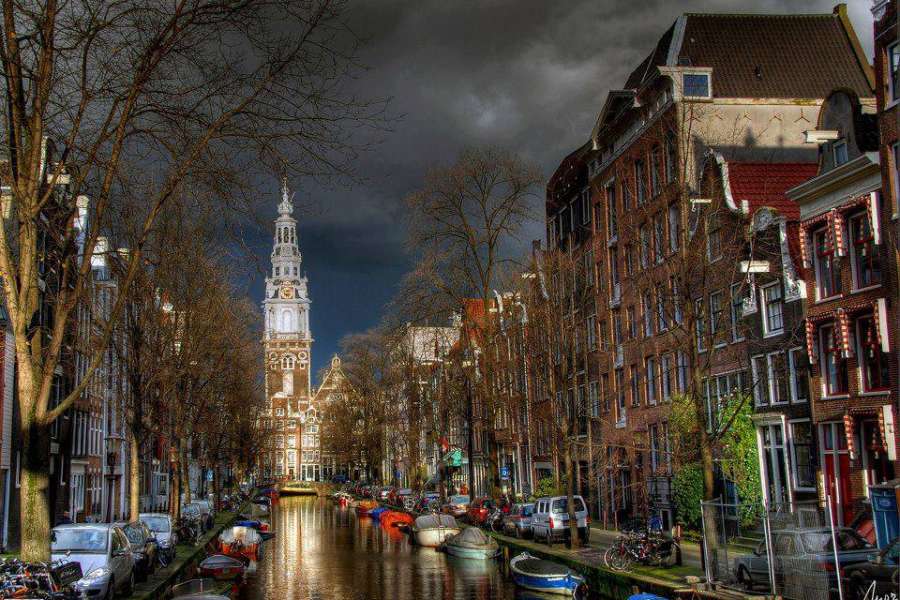

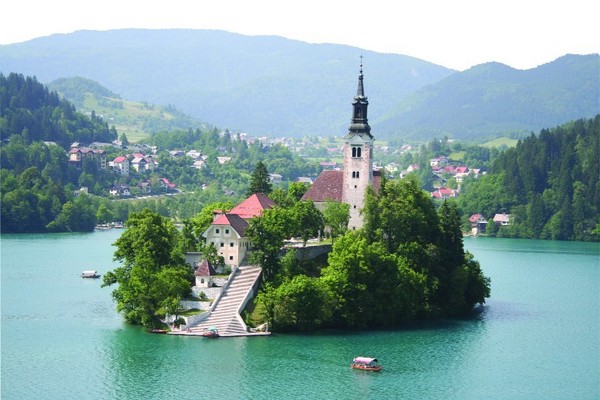

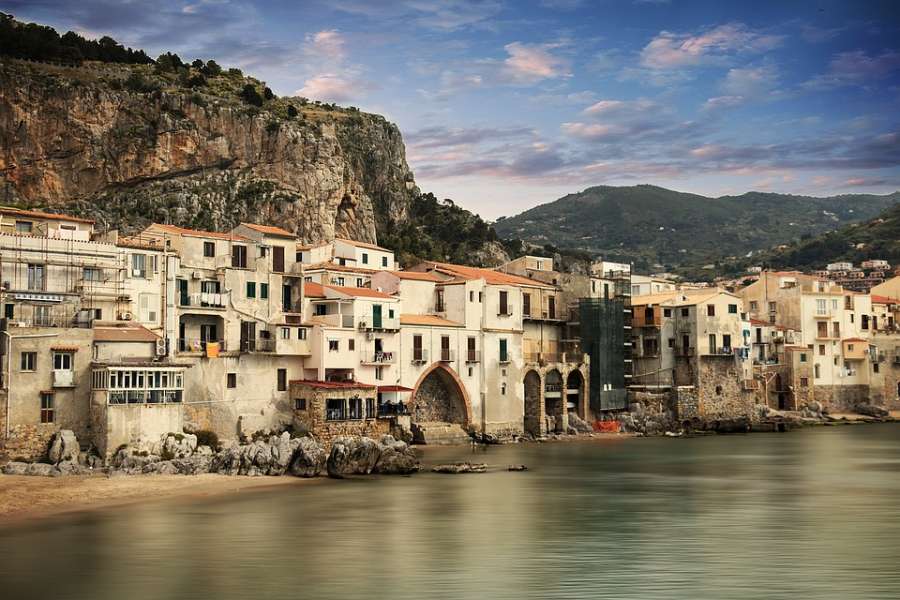
Leave a Comment